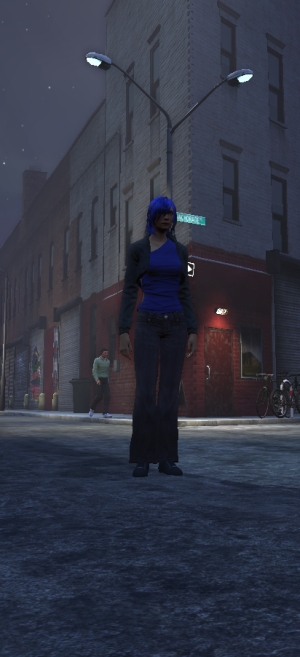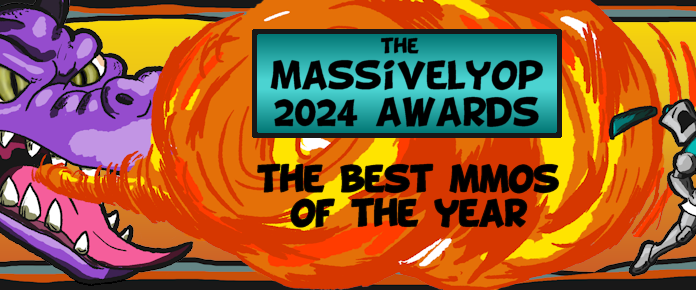
That may sound a bit dismissive, but it’s not really meant to be. And hey, this will provide a useful point of comparison when contrasted against my original experiences. So I start up, click through the character creator, and find myself thinking that it used to be a fair bit more flexible. Maybe not leaps and bounds, but at least somewhat, right? There used to be more options for hair color and facial features, yes? Or am I deluding myself?
Then I log in, and it’s the same damn game as it used to be.
 Obviously, this is somewhat hyperbolic, but the introductory experience in New York kicks off in exactly the same way as it had back when I first played the game. The differences exist, mostly in mechanical elements, but my first impression was literally staring and cursing that it’s the same damn game.
Obviously, this is somewhat hyperbolic, but the introductory experience in New York kicks off in exactly the same way as it had back when I first played the game. The differences exist, mostly in mechanical elements, but my first impression was literally staring and cursing that it’s the same damn game.
Things start changing once you get into the first bit of the prologue that sees you exploring your new abilities, kicking off a little bit in the way of new abilities. It has some interface weirdness, though, starting with the fact that the keybindings are weird right out of the gate. You can mess with some of it, but you can’t actually reposition abilities on your bars at all until you get your secondary weapon, which is a bit later in the tutorial.
Of course, changes to the game’s combat mechanics were kind of the whole point behind the whole-cloth rewrite of the game, weren’t they? So putting those front and center is pretty important. And to the game’s credit, the redone dream sequence tutorial is very welcome simply because it actually involves interaction and shows off what the game is supposed to be. You get combat, puzzle solving, and sneaking all in one convenient package, even if it’s the most low-key version of each.
I picked Trickster as my starting option mostly because I have a long-standing and well-documented love of Chaos Magic from the original The Secret World. That meant that my first mechanic introduced was the whole Paradox mechanic: Each time I deal damage divisible by 8, a gauge rises, and when it caps out one of several abilities trigger off of it, all of which is out of my control, unless I take several specific passive abilities that alter the rate at which the gauge fills and how the trigger abilities work.
My first instinct here was to rant about how this isn’t really much of a mechanic, but I actually warmed to it pretty quickly once I started looking into those passives. That’s the trick of it, really; while the mechanic doesn’t naturally change your playstyle much, it can change your passive layout, and you can choose to double down on it if you want, or you can just let it happen or not over time while focusing on other mechanics. That’s a nice balancing system.
The fact that both of your weapons have their own weapon resources also strikes me as working nicely, in the long run; by giving both of them a minigame you can focus on or largely ignore, you free up more space for builds, and giving them both different resources means you have a reason to use abilities from both weapons. It does seem like it would rather cut down on your overall build flexibility a bit, but it makes passives more immediately comprehensible. I can live with that.
Plus, it nicely answers why you can’t just solely focus on one weapon; you can focus pretty heavily, but resource consumption alone encourages back-and-forth, at least from an early glance.
I am notably less enthusiastic about the fact that the game’s story has not, apparently, been changed much if at all. All of the actual story beats are identical, and that rankles me simply because there’s no reason to completely reset player progress if they’re playing through the same game with slightly changed mechanics. More to the point, it still delivers story in the same way, with one NPC setting to a monologue whilst your character stands there and, possibly, occasionally gestures to make it clear that she’s listening.
 Sometimes, of course, this makes a certain amount of sense. Geary not letting you get a word in edgewise does seem like her. But it always felt to me like I was basically just an audience for the NPCs here, and while they’re entertaining NPCs that didn’t feel like it ever spilled over into “great story” so much as “great setting.” Unlike, say, World of arcraft, you actually show up in the cutscenes, but you still don’t seem to be an active participant in what’s going on. You’re a witness, not an actor, and everyone is constantly talking at you rather than to you.
Sometimes, of course, this makes a certain amount of sense. Geary not letting you get a word in edgewise does seem like her. But it always felt to me like I was basically just an audience for the NPCs here, and while they’re entertaining NPCs that didn’t feel like it ever spilled over into “great story” so much as “great setting.” Unlike, say, World of arcraft, you actually show up in the cutscenes, but you still don’t seem to be an active participant in what’s going on. You’re a witness, not an actor, and everyone is constantly talking at you rather than to you.
But that setting? Still great. There’s material for miles here, and it would make for a great tabletop game right out of the gate. And while it’s a pity that the game’s whole renewed focus didn’t actually translate to any sort of change in story or interaction with same, I’m still a huge fan of how the story makes humans and mostly humans as the central players even as they’re trimming up the edges of things far bigger.
And then I get to Kingsmouth, and again, it’s the same game. This is the same game that I’ve played before, right down to the quests being identical and triggering long-forgotten memories. It is, of course, possible that I’m fabricating those memories; I certainly remember having to jump on cars to attract zombies which I subsequently set on fire from back in the day, but if our readers would like to tell me that this is new to the game, please, set me straight.
But again, I’m pretty sure this hasn’t changed at all. Truth be told, I’m pretty sure that none of this has actually changed, which does not exactly fill me with hope for the rest of the game. It’s not that I remember it being bad, mind you, it’s just that it needs to justify that large-scale reboot that the game sort of sold itself on.
Right now, it’s not doing that. In fact, outside of a different Argatha and a few bits of different tutorial, the only real change is in combat… which did not require a “shut down and start over” to be effective. So I am left more than a little nonplussed.
The combat does feel rather significantly improved thus far, though. So that’s something.
Of course, half of the weapons I’m using right now were not my weapons from back in the day, so it’s possible that I haven’t even seen the best side of combat. The good part is that it is possible to unlock at least one additional weapon without utterly destroying myself, or so I am told, and thus I turn to the readers to see what extra weapon I ought to unlock. Go forth! Vote!
CMA: What weapon should I seek to unlock?
- Blade (11%, 20 Votes)
- Blood Magic (18%, 32 Votes)
- Elementalism (15%, 26 Votes)
- Fist (9%, 16 Votes)
- Hammer (13%, 24 Votes)
- Rifle (7%, 12 Votes)
- Shotgun (17%, 30 Votes)
- None, stick with what you have (10%, 18 Votes)
Total Voters: 178
Votes are open until Friday at 6 p.m. EST, because that’s how we do it up in these parts. It’s predictable, yes, but why mess with a formula that works? And your feedback is welcome even past that point, if you’d like to point out that I am recalling the early levels of the pre-reboot game incorrectly or what-not. You can leave that in the comments or mail it along to eliot@massivelyop.com; you’ll get another chance to shout at me as I continue leveling and exploring the rather familiar setting of Kingsmouth.
Seriously, I’ve driven through, visited, and lived in towns that feel exactly like this place, except usually they contained fewer zombies. But we’ll save that whole discussion for next week.













